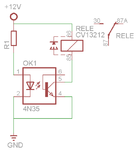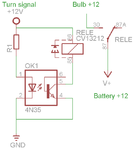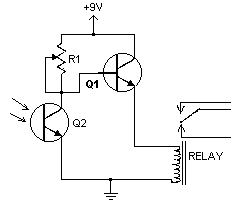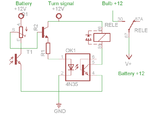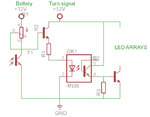sappy2000
Junior Member level 2
Hi all,
I am a noob here. I am trying to make the DRL (daytime running light) to blink with my turn signal.
So what most people do is cut the ground wire of the DRL and connect it to the positive terminal of the turn signal light. This is result in the follow:
DURING DAYTIME:
When the turn signal is off (positive wire is at 0v)
the DRL voltage different will be +12V, therefore it will be on.
When the turn signal is on (blinking) (positive wire is at 12v)
the DRL voltage different will be 0V, therefore it will be off (blink alternatively to the turn signal)
AT NIGHT when the DRL is OFF:
When the turn signal is off (positive wire is at 0v)
the DRL voltage different will be 0V, therefore it will be off
When the turn signal is on (blinking) (positive wire is at 12v)
the DRL voltage different will be -12V, therefore it will be on (blink with the turn signal)
This works perfect for all the cars with stock tungsten light bulbs..
HOWEVER the problem for me is that my DRL is LED! So -12V is not something I want to feed to the LEDs.
So what is a simple solution? A relay or some sort? Or some chip that can flip the -12V back to +12V?
Thank you in advance for all the people that can able to help me.
Sappy:-D
I am a noob here. I am trying to make the DRL (daytime running light) to blink with my turn signal.
So what most people do is cut the ground wire of the DRL and connect it to the positive terminal of the turn signal light. This is result in the follow:
DURING DAYTIME:
When the turn signal is off (positive wire is at 0v)
the DRL voltage different will be +12V, therefore it will be on.
When the turn signal is on (blinking) (positive wire is at 12v)
the DRL voltage different will be 0V, therefore it will be off (blink alternatively to the turn signal)
AT NIGHT when the DRL is OFF:
When the turn signal is off (positive wire is at 0v)
the DRL voltage different will be 0V, therefore it will be off
When the turn signal is on (blinking) (positive wire is at 12v)
the DRL voltage different will be -12V, therefore it will be on (blink with the turn signal)
This works perfect for all the cars with stock tungsten light bulbs..
HOWEVER the problem for me is that my DRL is LED! So -12V is not something I want to feed to the LEDs.
So what is a simple solution? A relay or some sort? Or some chip that can flip the -12V back to +12V?
Thank you in advance for all the people that can able to help me.
Sappy:-D
